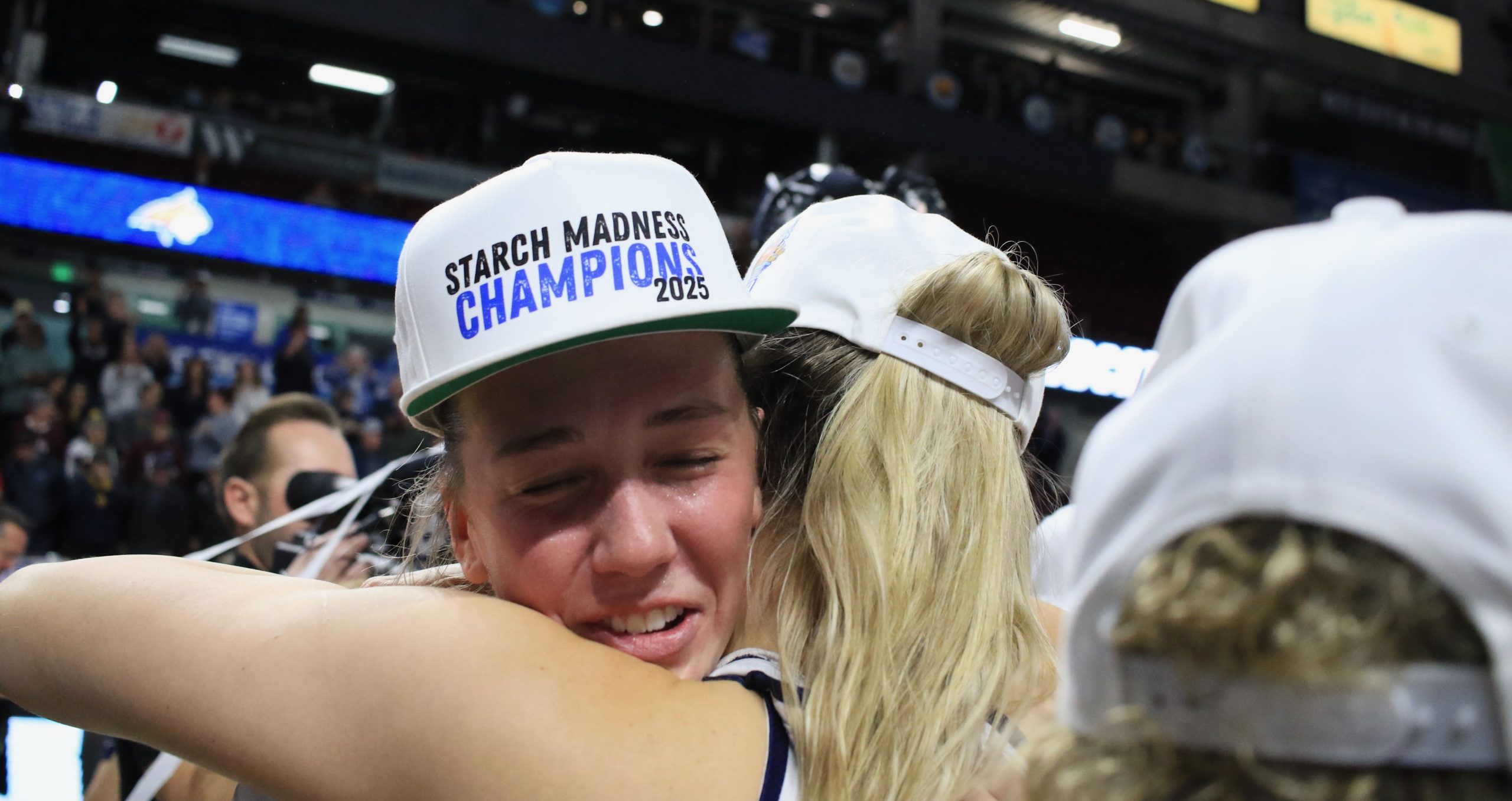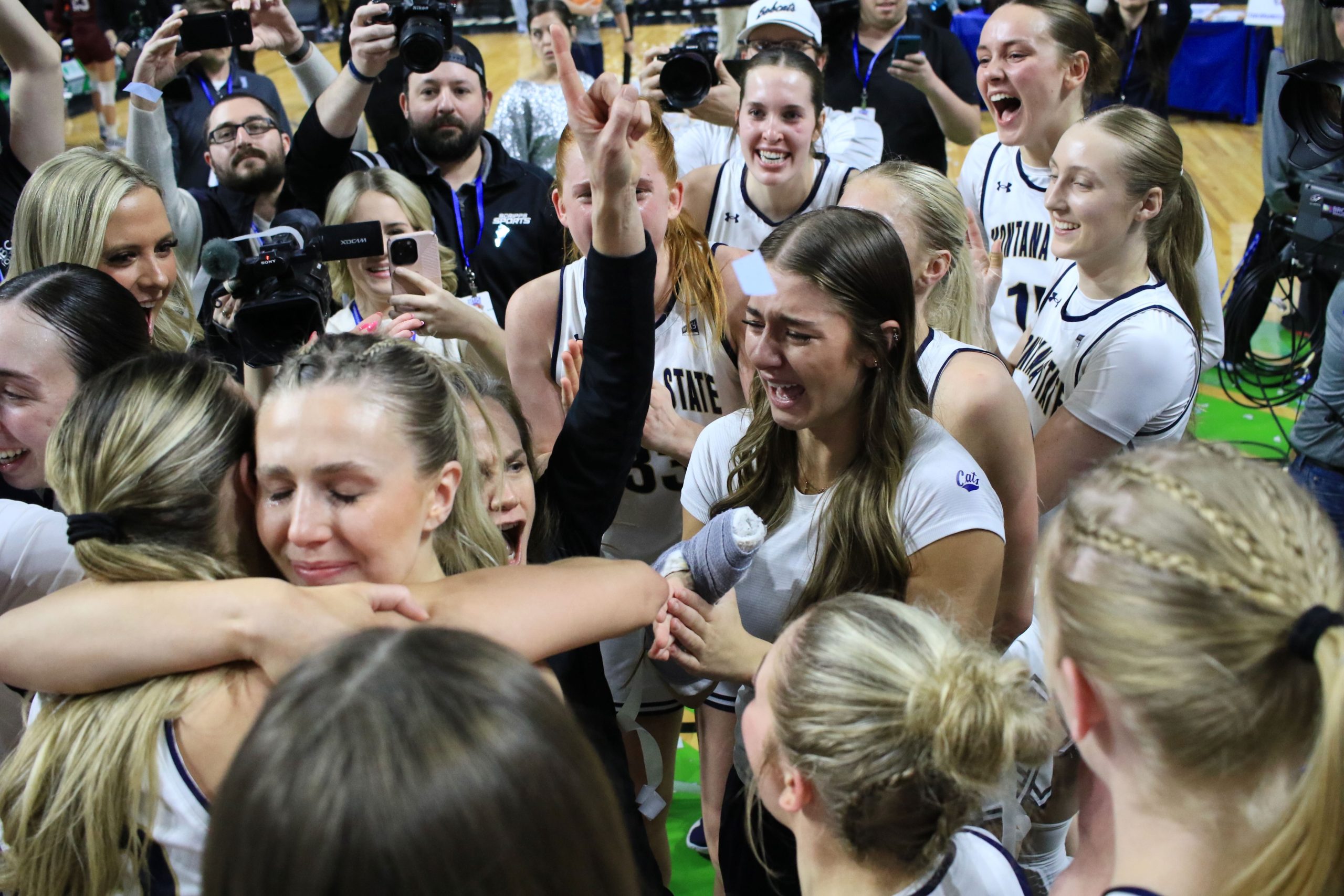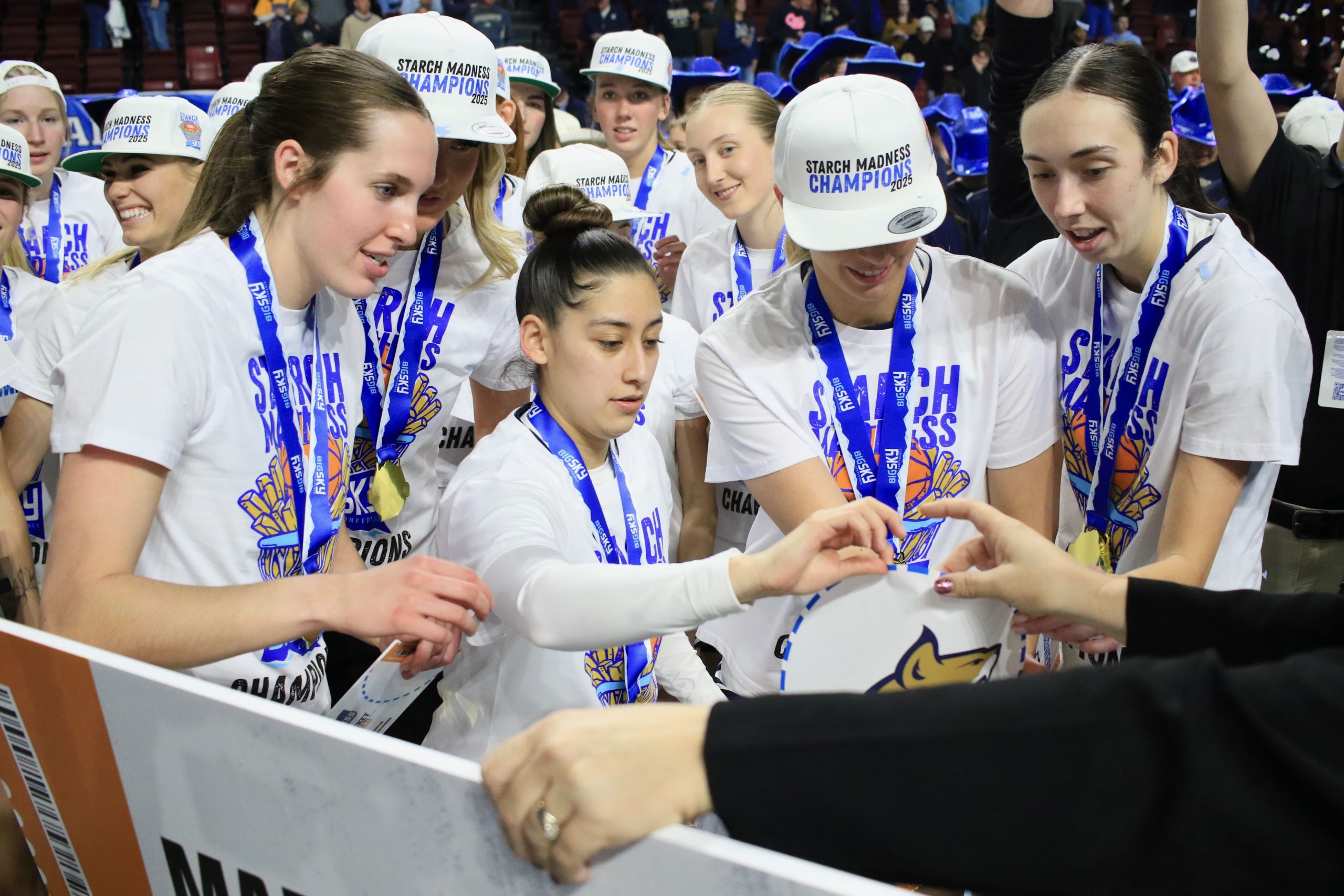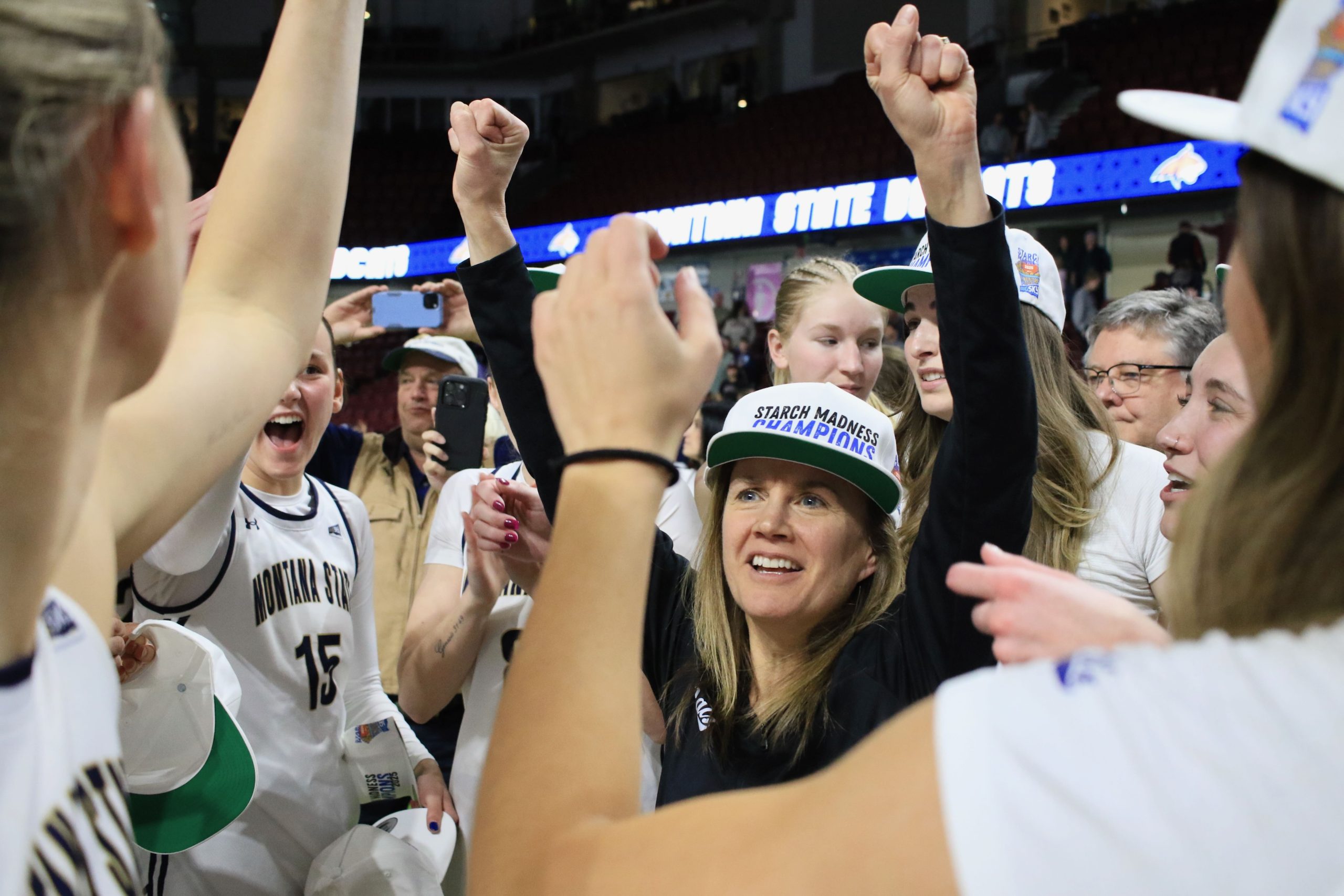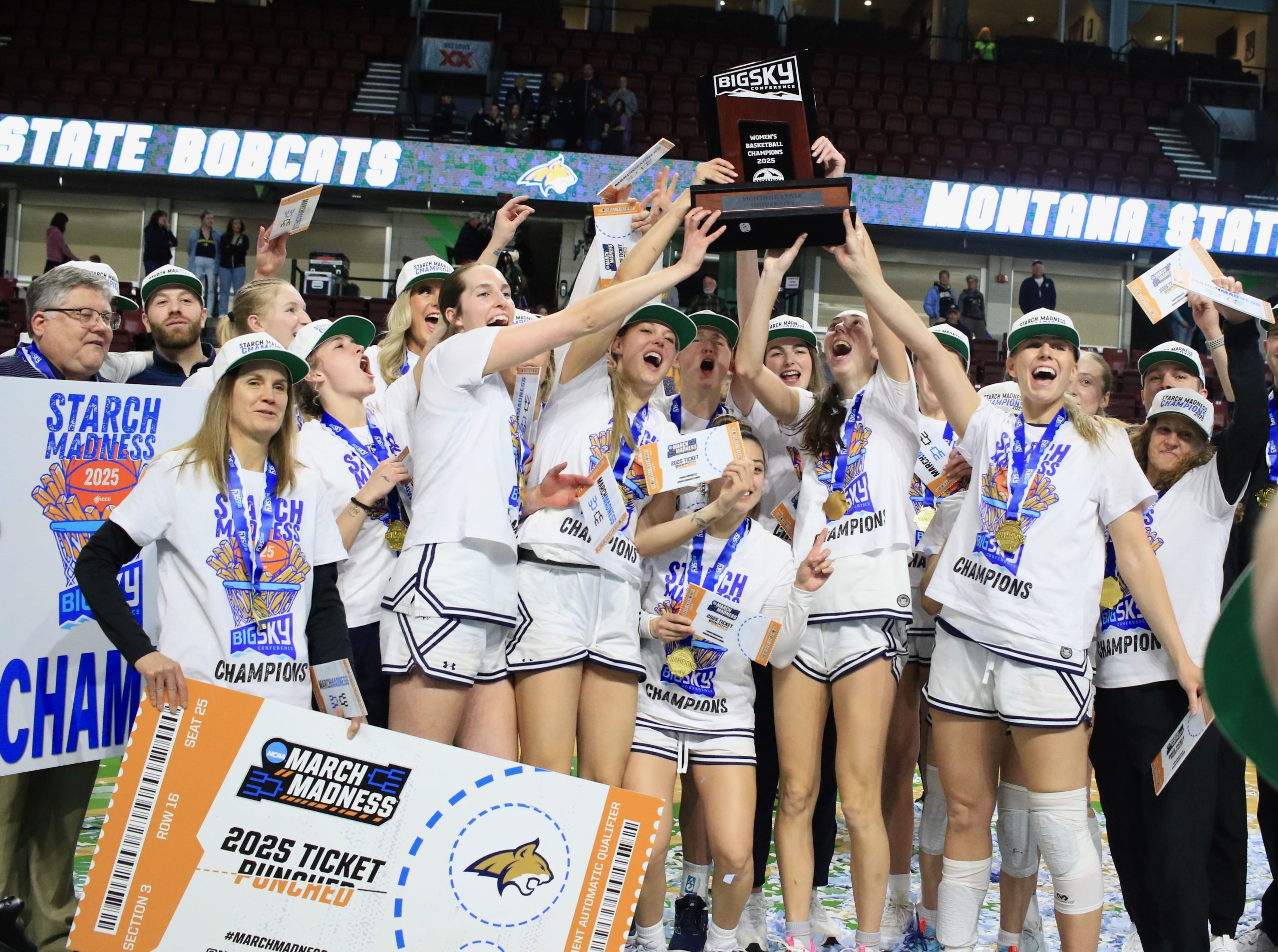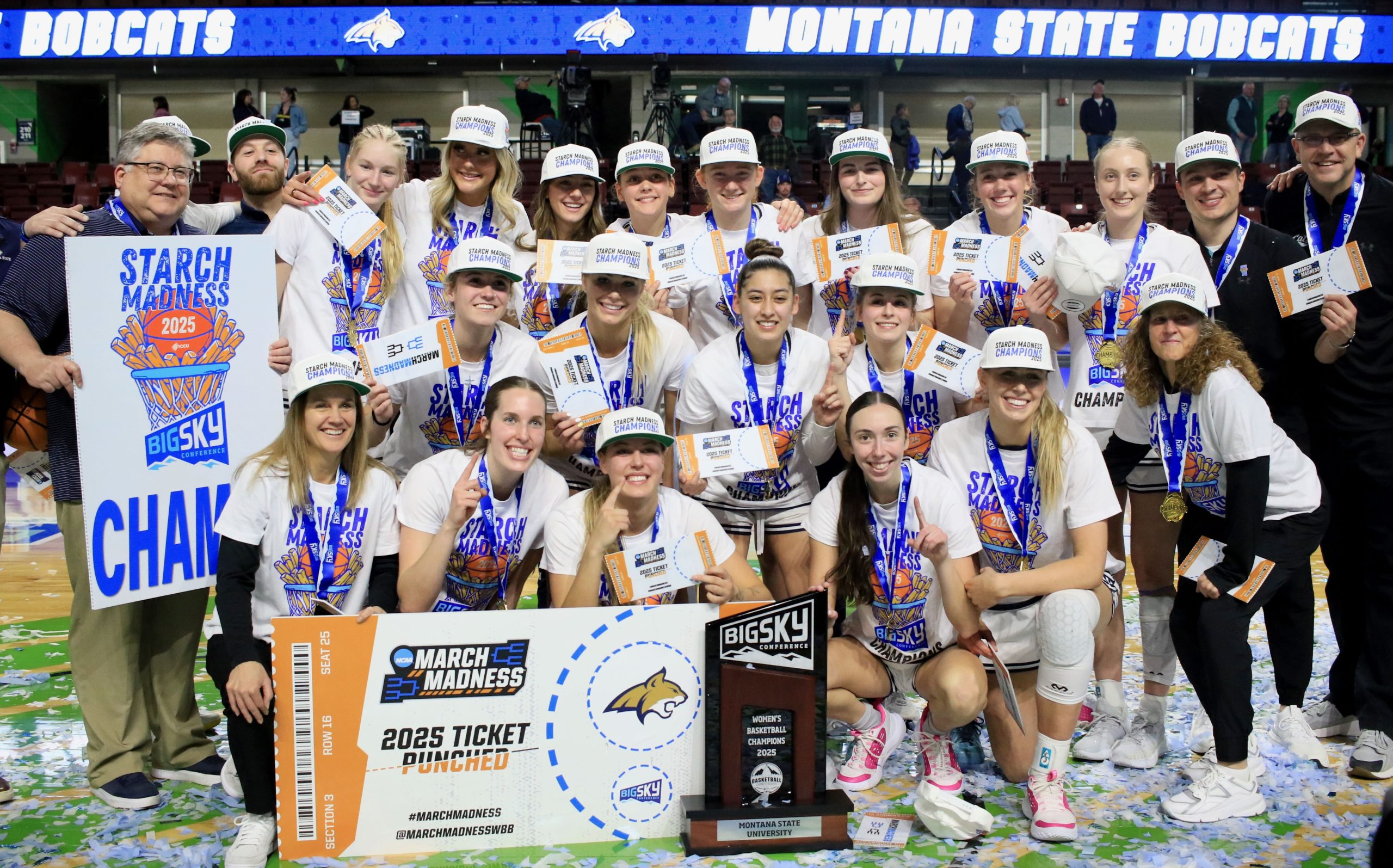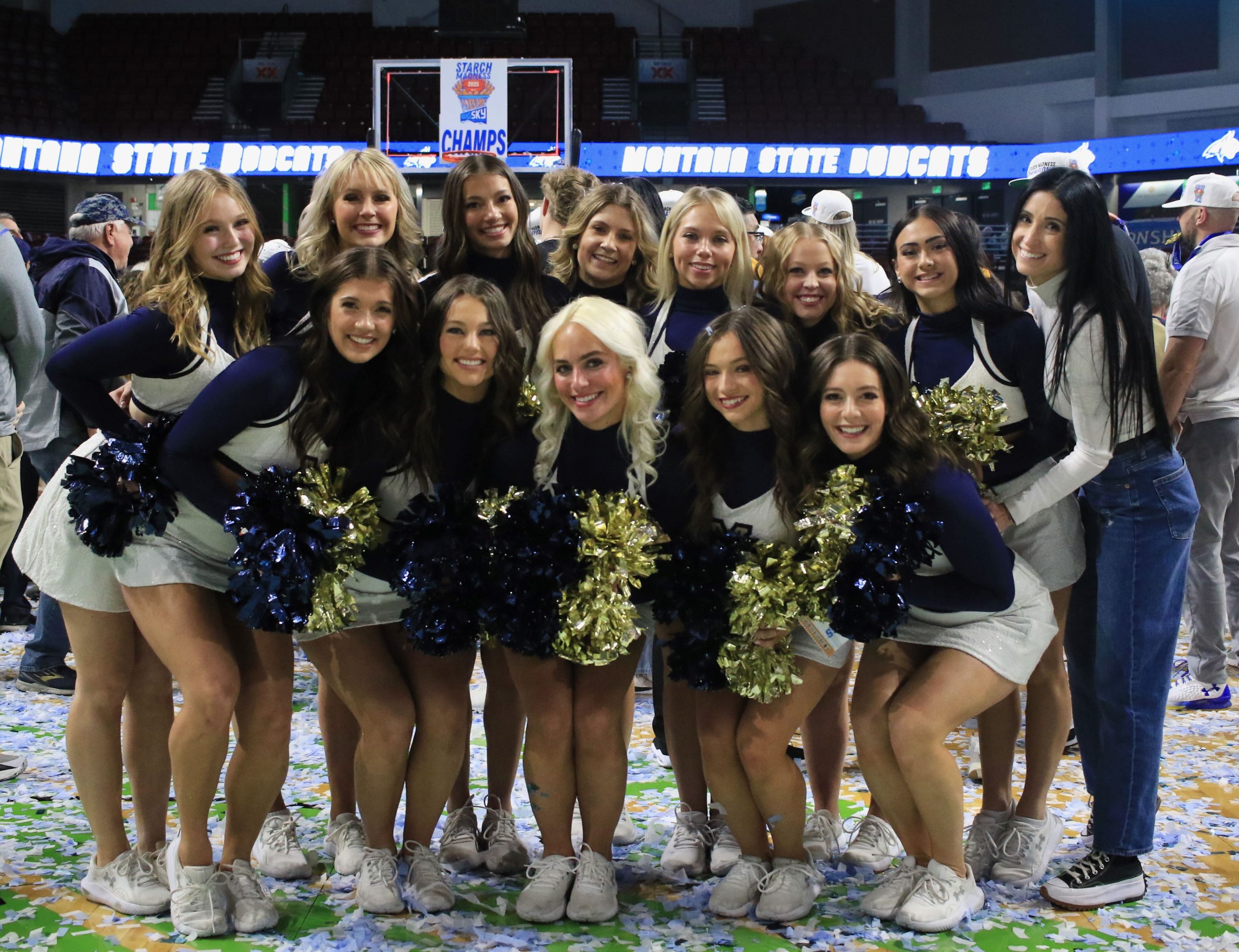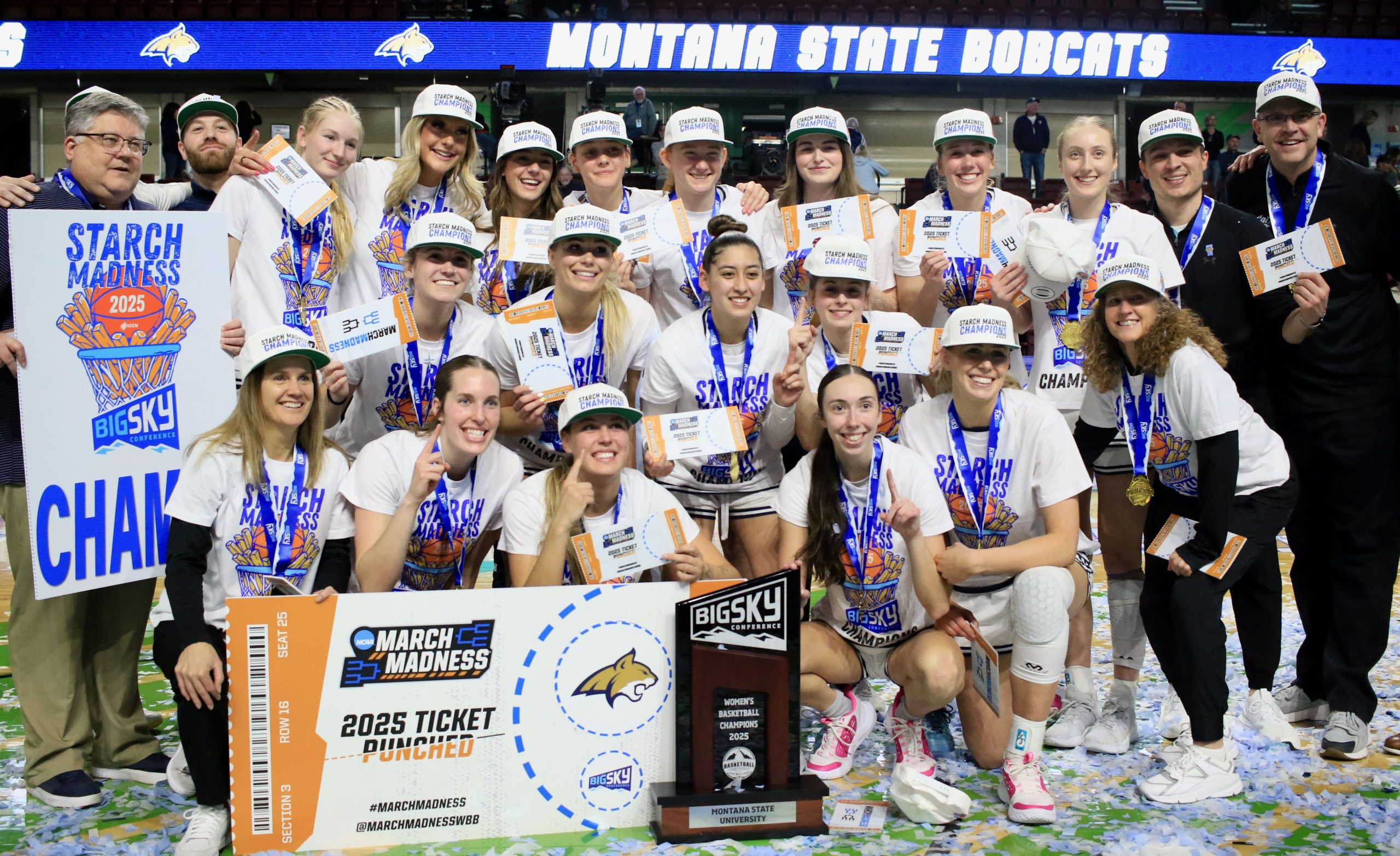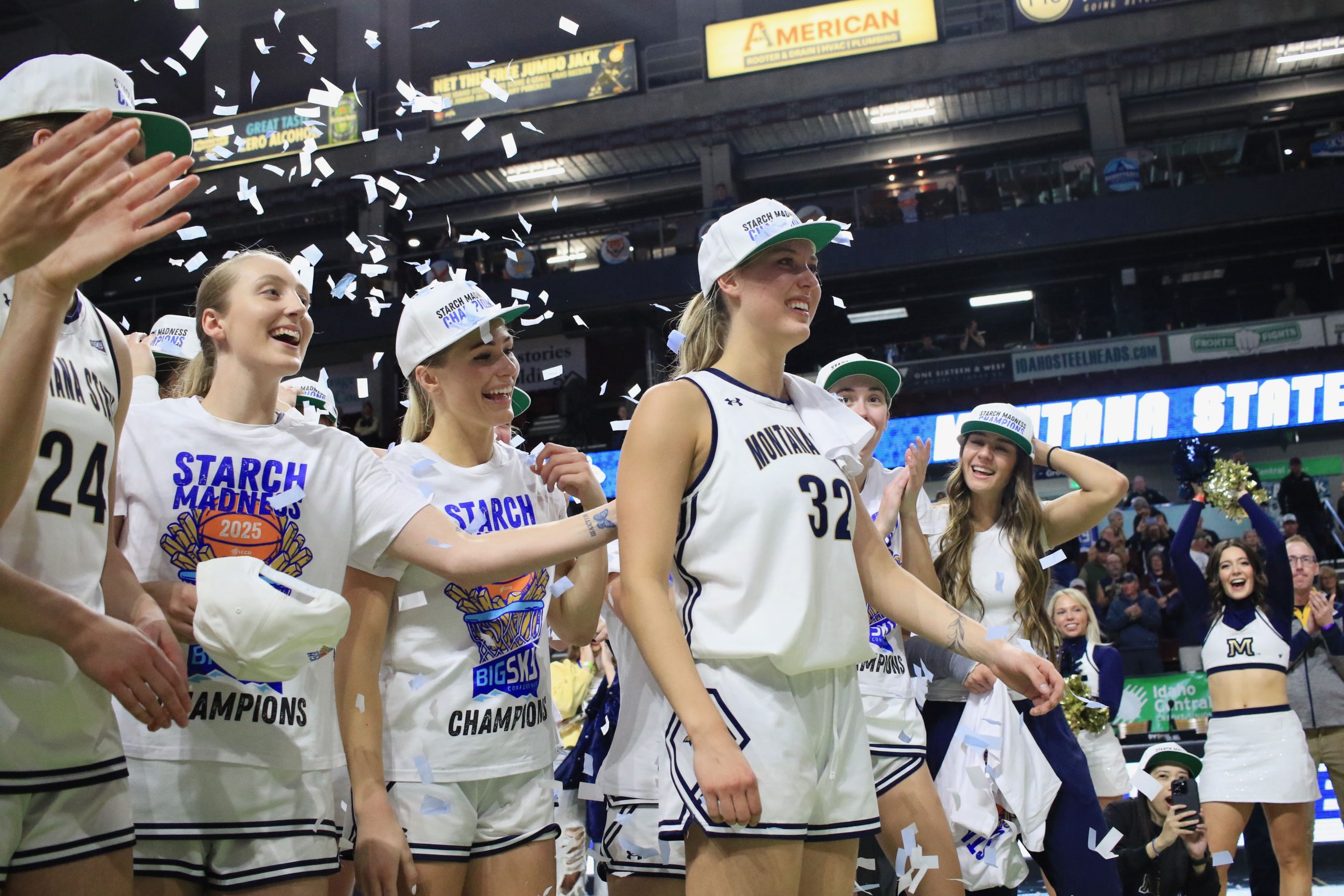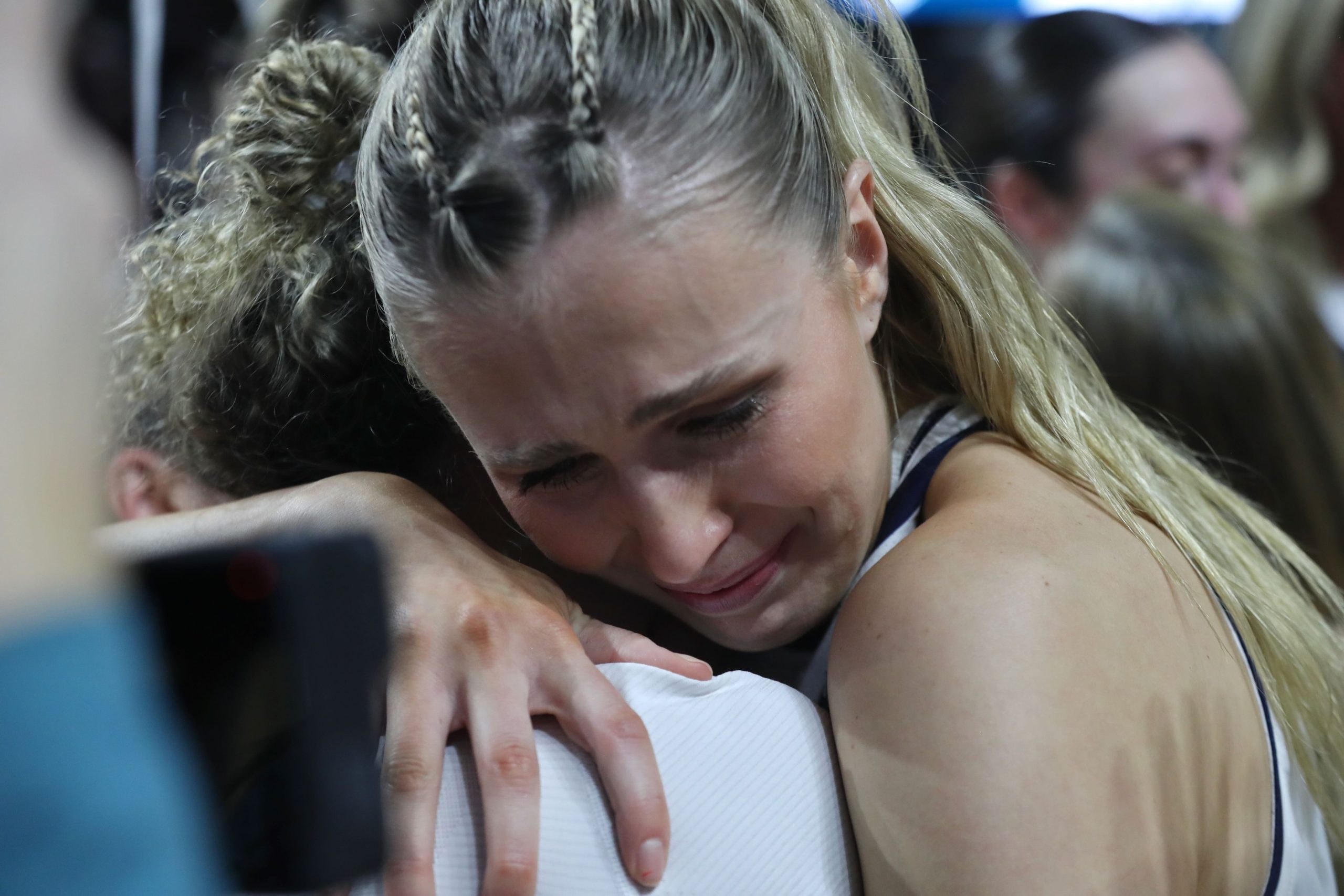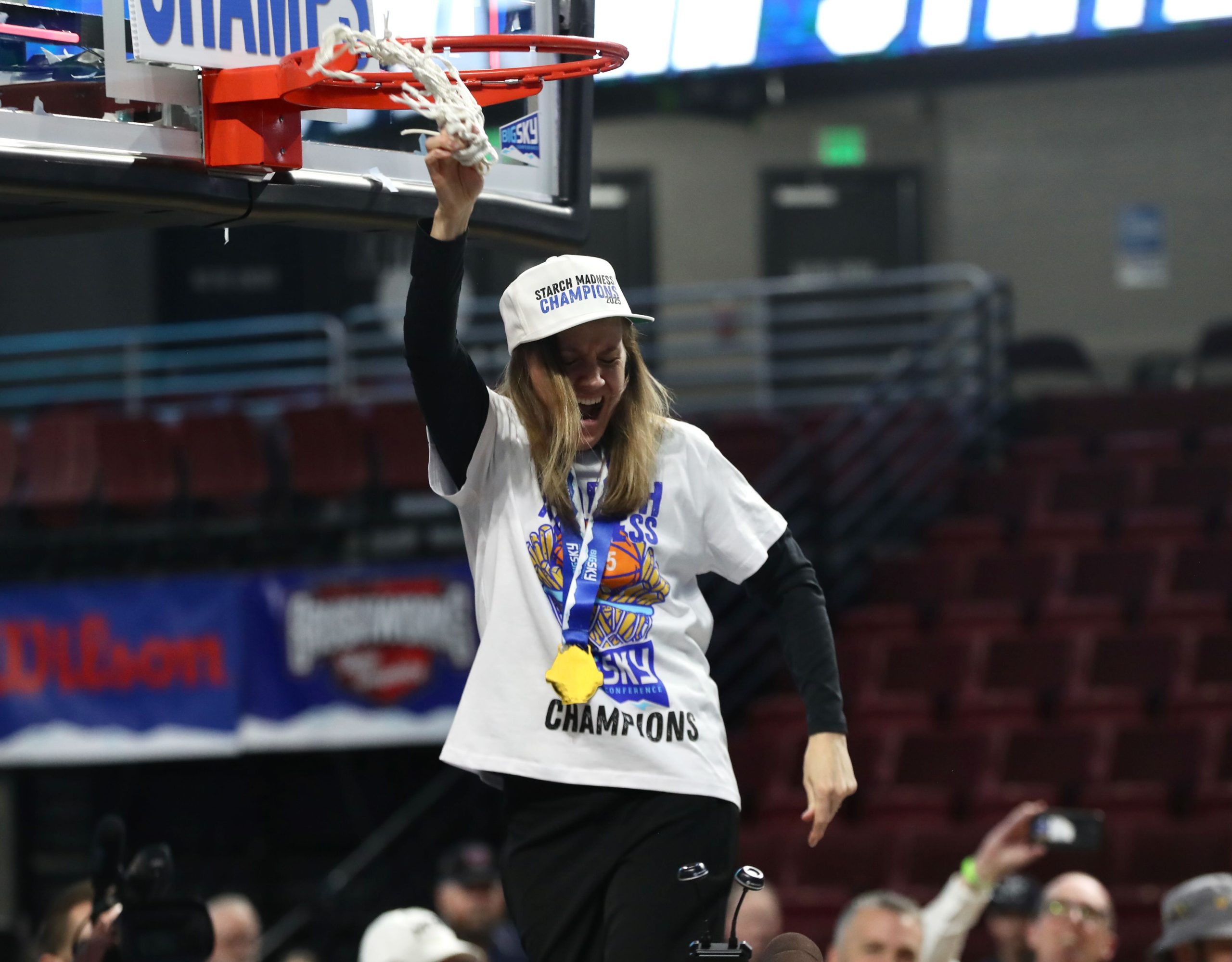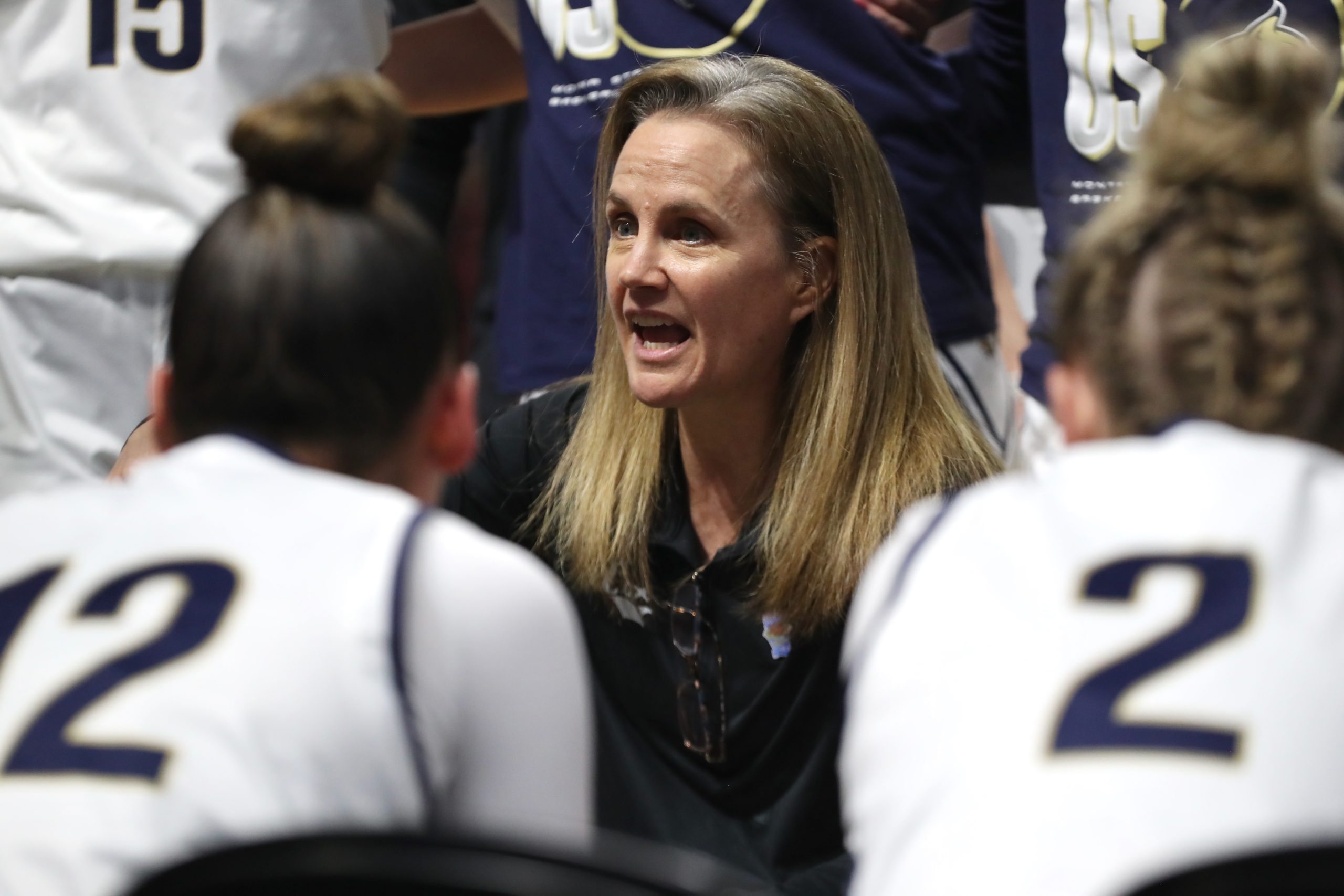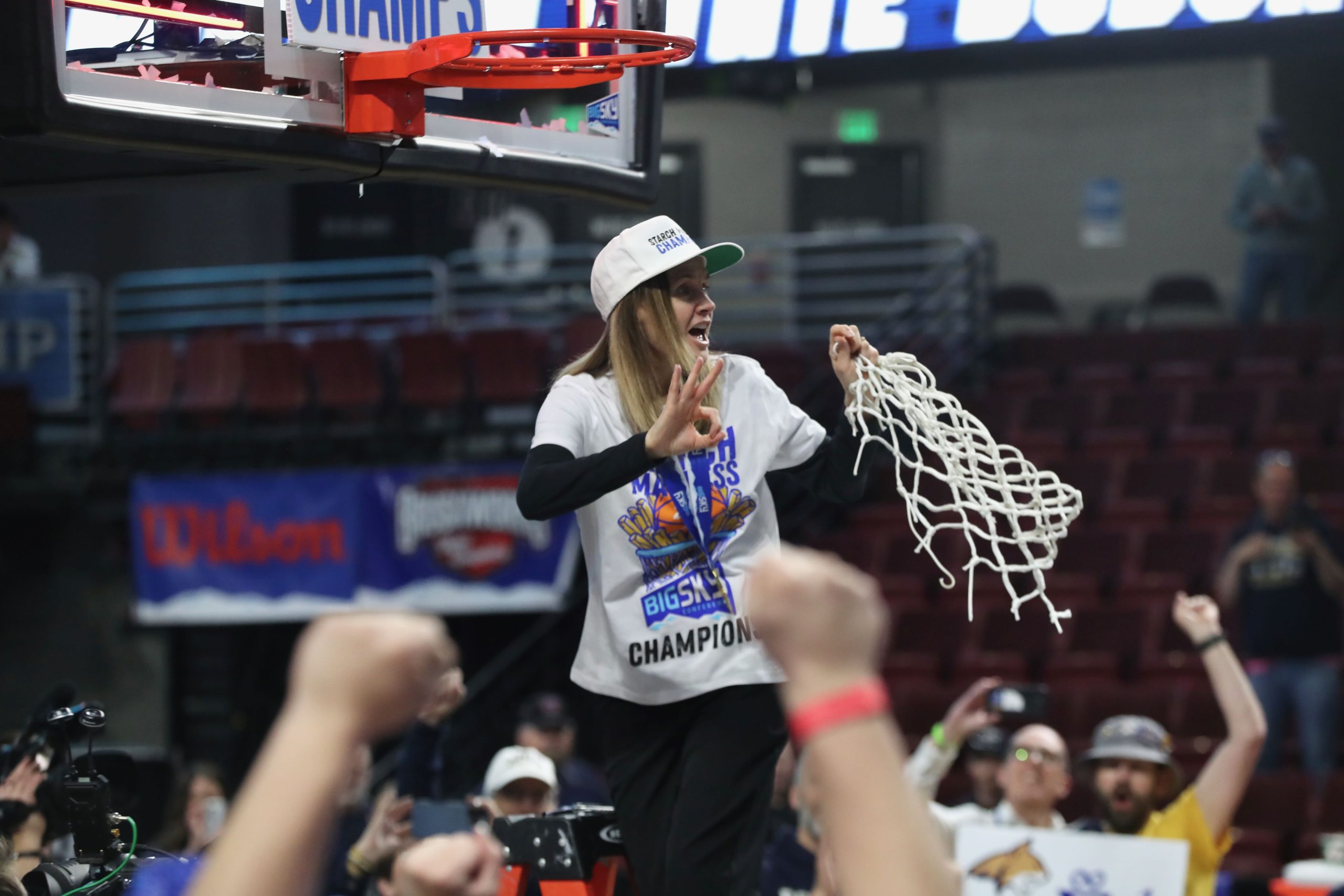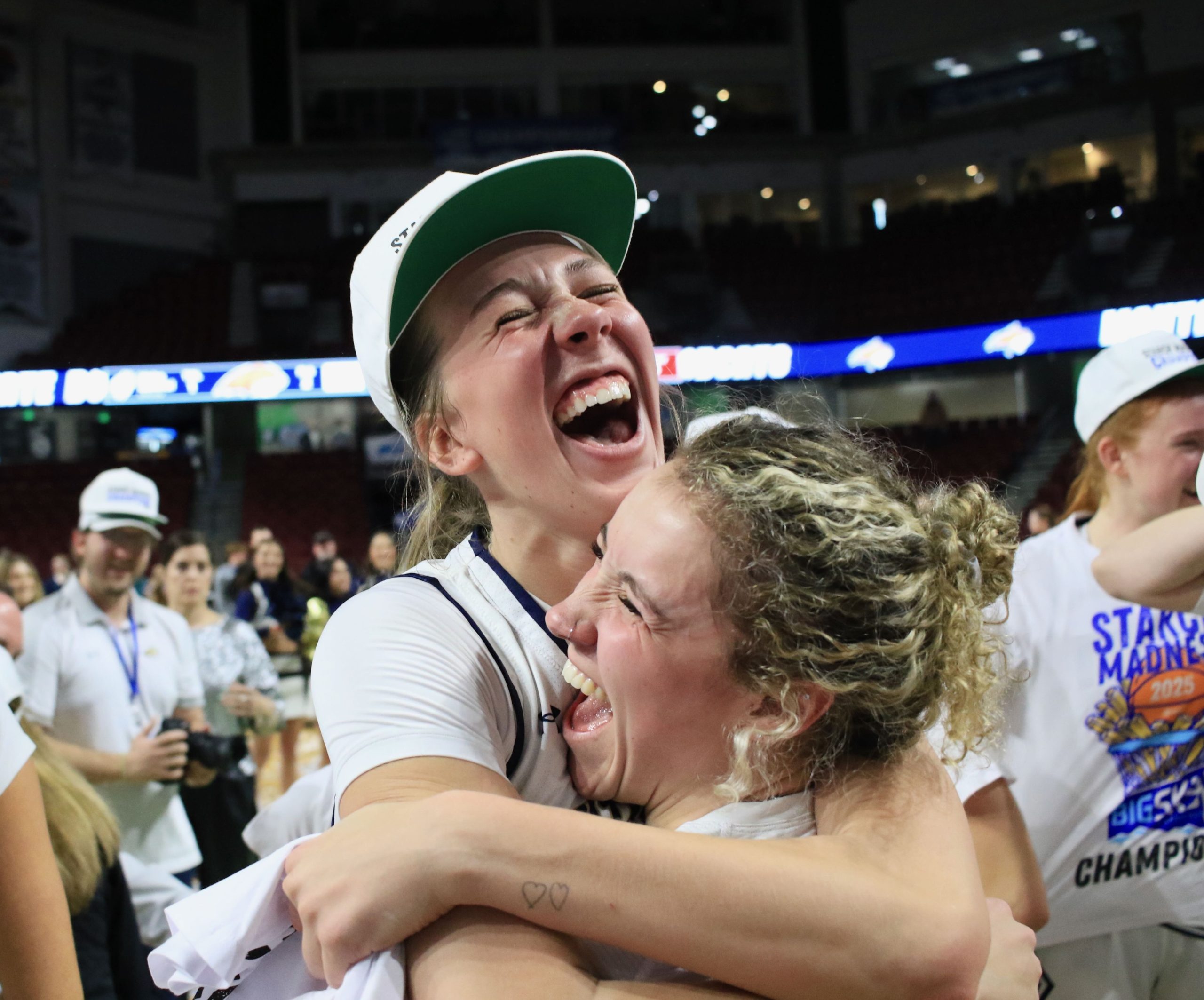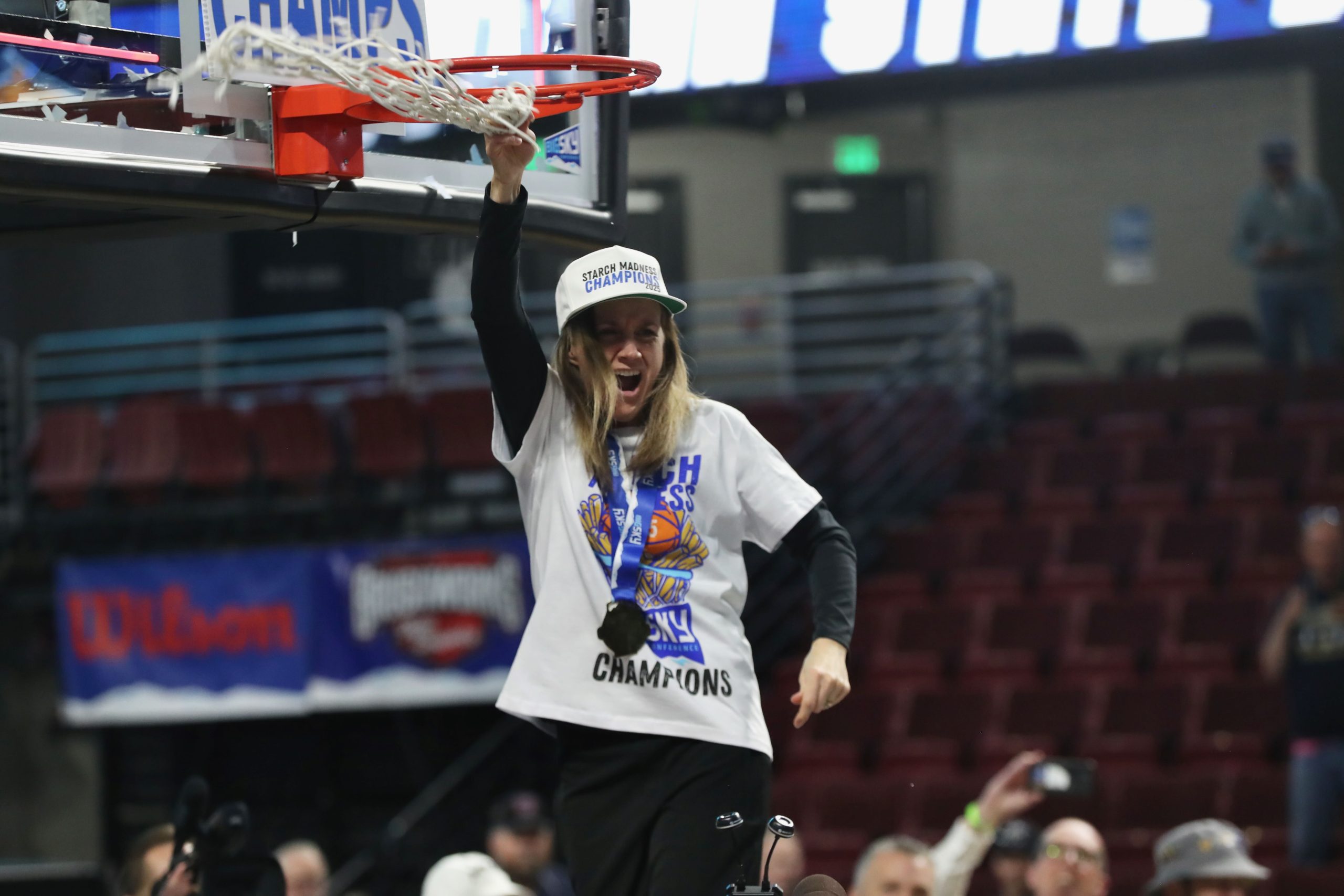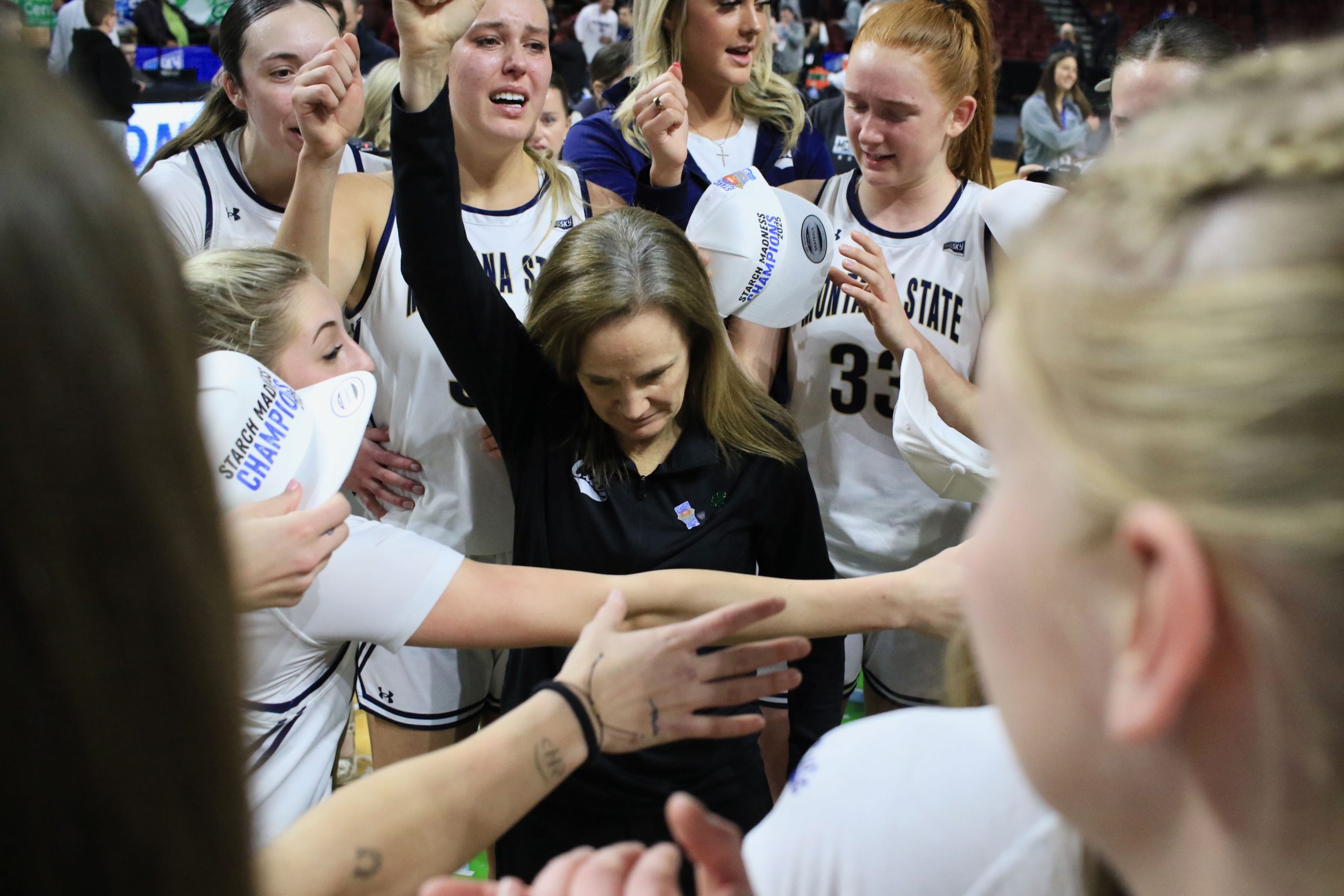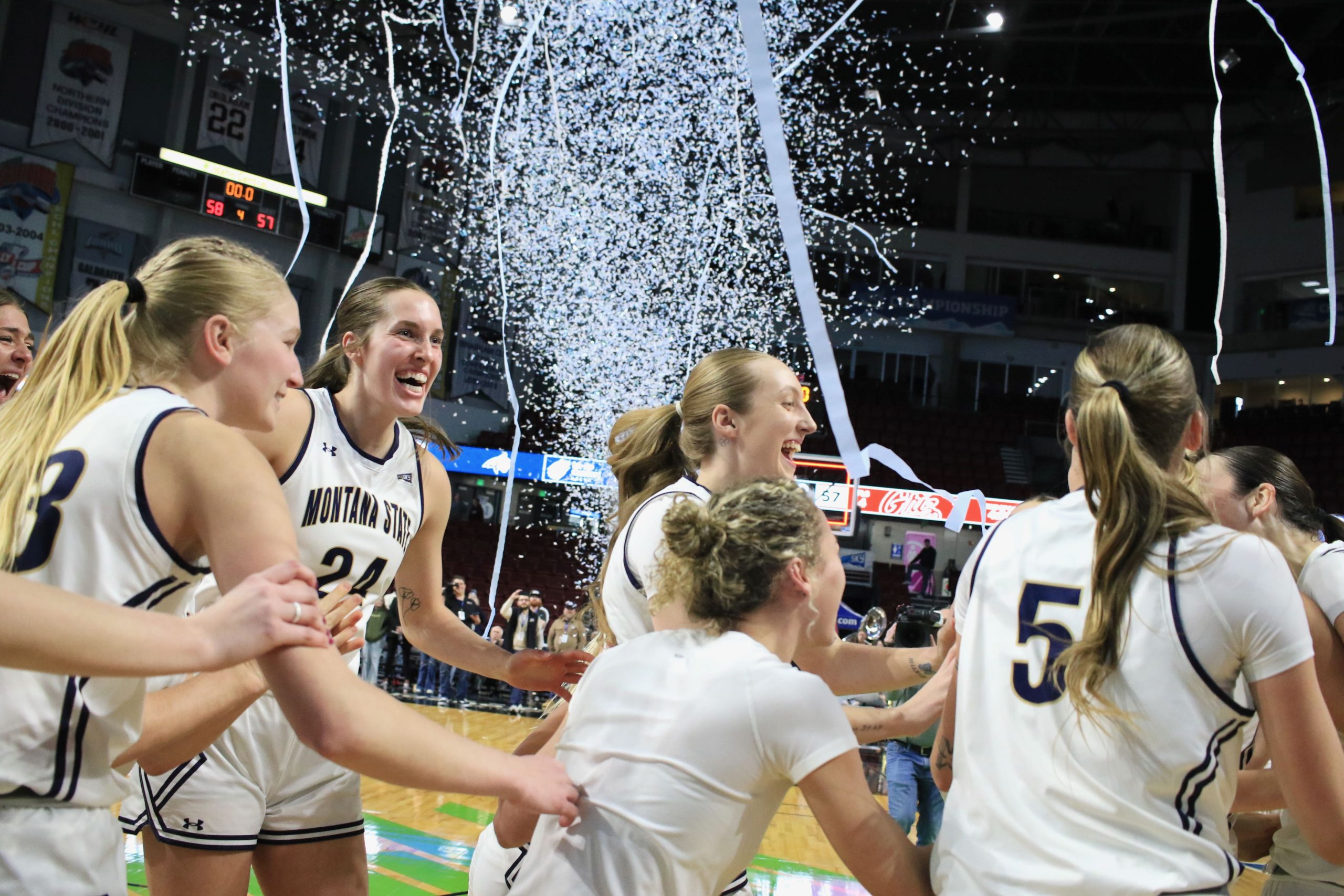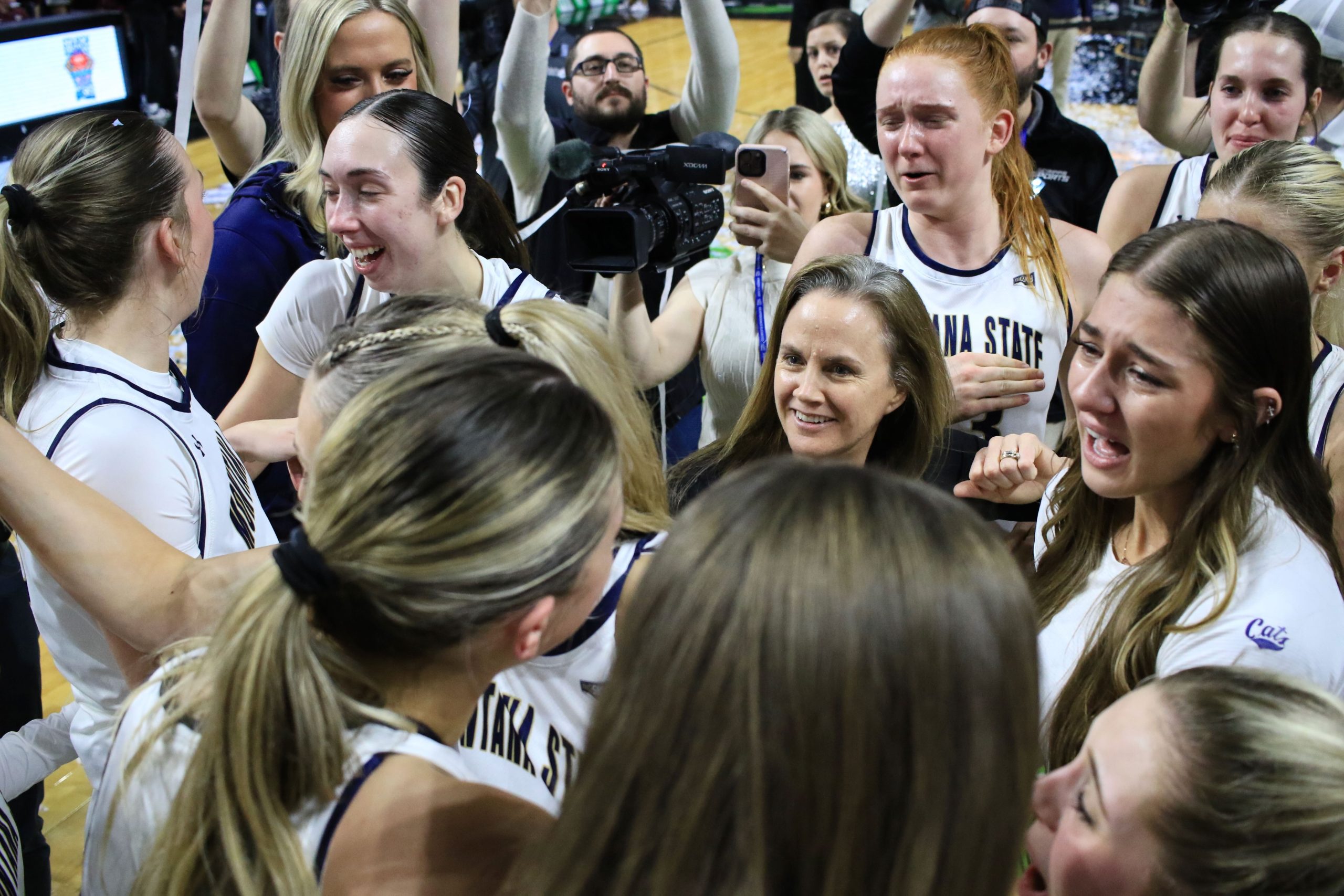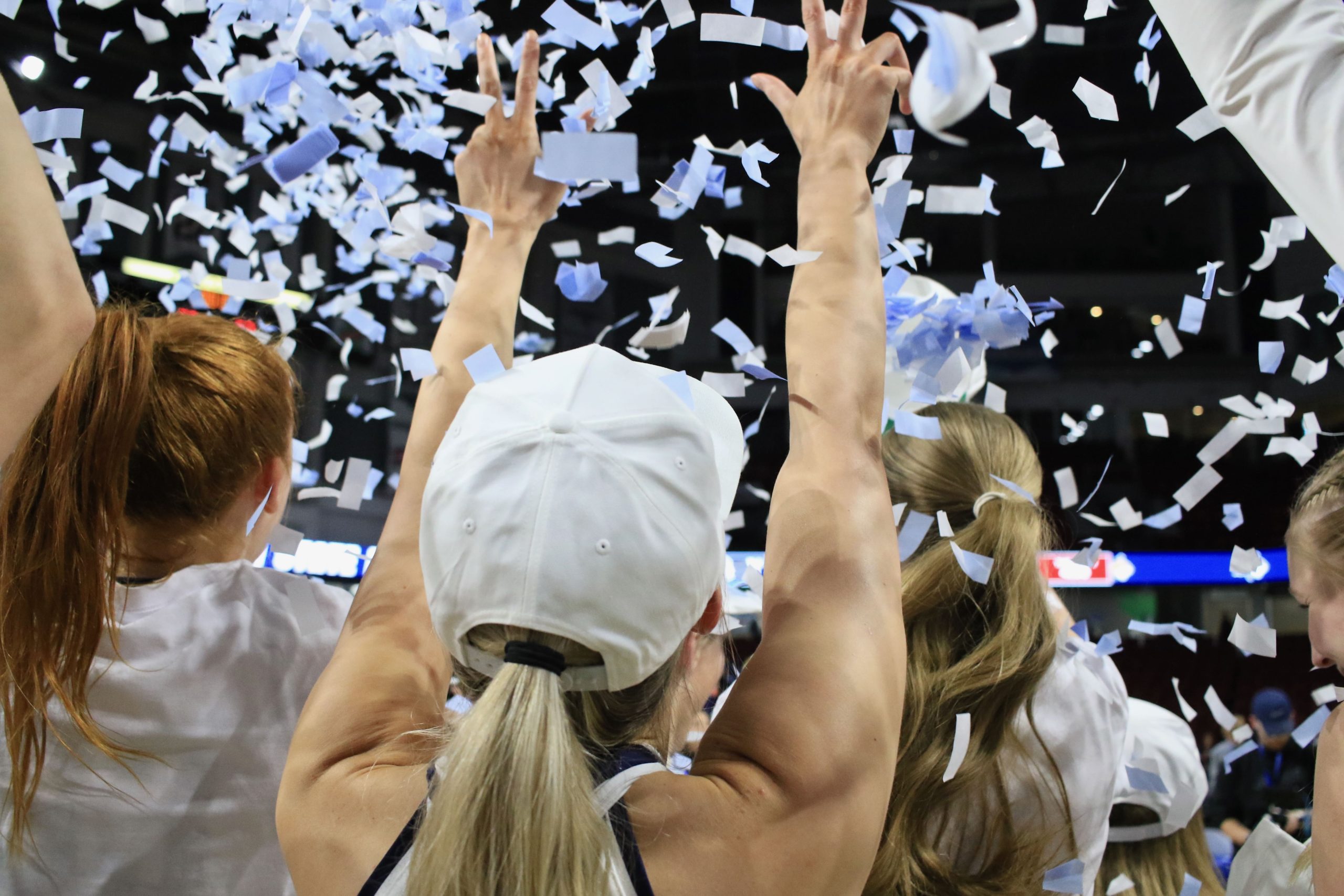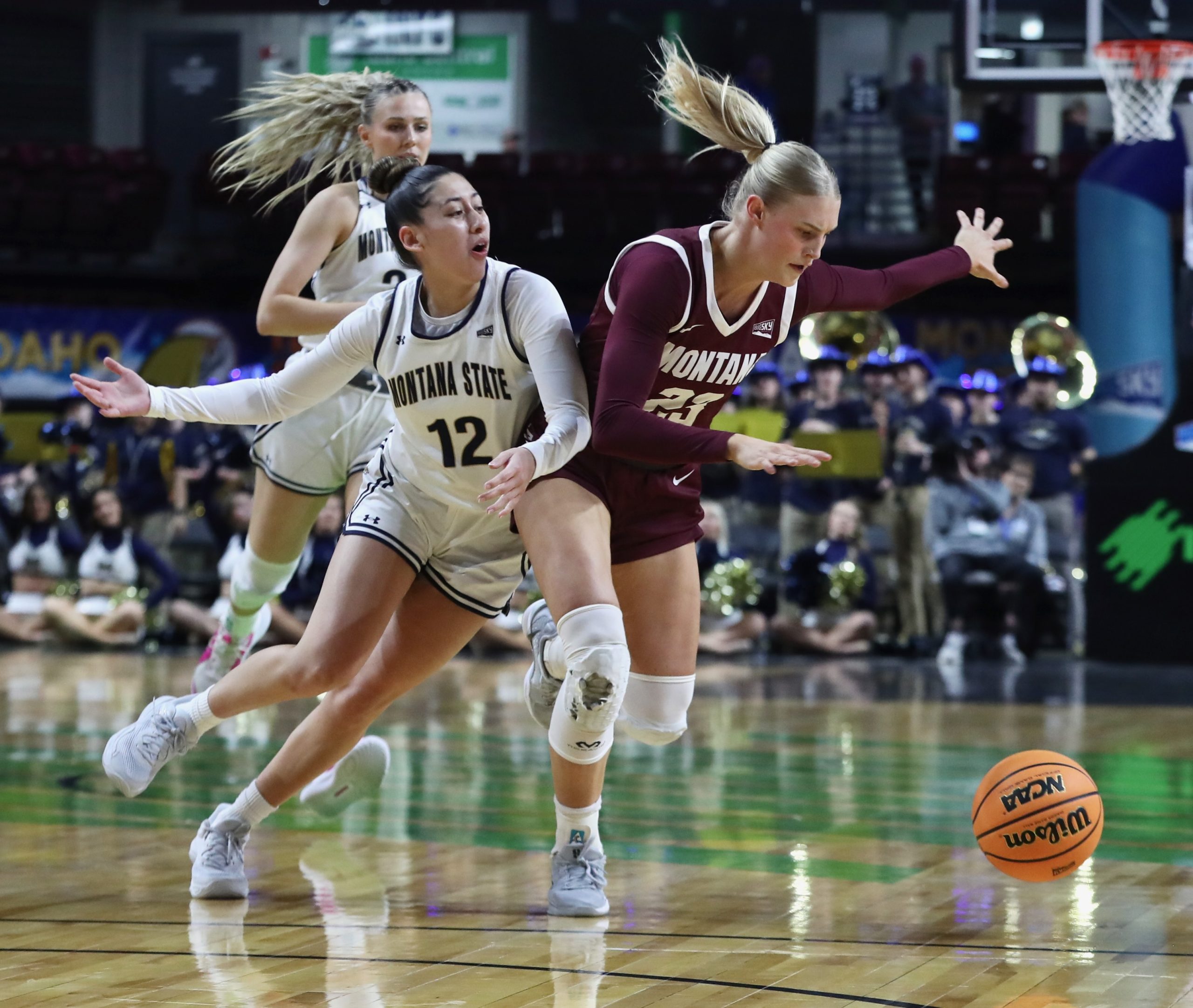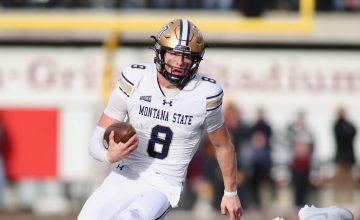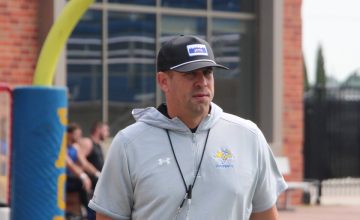BOISE, Idaho – With 37 seconds remaining in Wednesday’s Big Sky title game between Montana and Montana State, the game sat finely poised on a knife’s edge.
The weight of history had been sitting heavily in the building since before tipoff, even more than it generally does before a game that will send one team home and one to the NCAA Tournament. The Bobcats – 29-3, their high-pressure defense the scourge of the Big Sky – were looking to cement their dominance of the conference and clinch a Big Sky first-ever 30-win season – something that even legendary Montana coach Robin Selvig never accomplished.
The Lady Griz – just 14-17 entering the game – were on the verge of completing one of the greatest underdog tournament runs ever. Entering as the No. 6 seed, they’d beaten No. 3 Idaho and No. 2 Northern Arizona on back-to-back days. Now they wanted No. 1. If they could do it, they would win their first title since the year before Selvig’s retirement in 2015-16, which doubled as the last tournament played in Missoula.
The last time the two rivals had met in the title game was 2008, with the Lady Griz winning 101-65 – just another blowout in Selvig’s long career of brushing away his Big Sky rivals like so many annoying mosquitoes. On the other sideline was Tricia Binford, then in her third season at Montana State.
The intervening 17 years had seen the programs’ respective stars rise and fall. Selvig retired and, as the Lady Griz slipped, Binford built the Bobcats into one of the consistent contenders in the Big Sky. Over the years, Montana and Montana State’s destinies had criss-crossed again and again, but never intersected in the final Big Sky game of the season. Now they had, and this one was much closer than the last time.
As Montana prepared to inbound the ball, the Lady Griz trailed 56-52.
Nobody knew it, but the next 37 seconds would contain a full season’s worth of drama – joy and pain on both sides, the game won and lost and won again, careers redeemed in one moment and ruined in the next.
Dani Bartsch inbounded the ball to Avery Waddington, and the clock began ticking down.

37…36…35…
With 33 seconds on the clock, Waddington spun to her right against Montana State’s Ella Johnson, heading down the middle of the lane.
The freshman from Coeur d’Alene had been one of the brightest spots of a trying season for Montana.
In mid-January, the university placed fourth-year head coach Brian Holsinger on administrative leave with the Lady Griz sitting at 5-10. He would never coach another game, officially resigning on February 10th under the cloud of a university investigation that’s still ongoing.
Associate head coach Nate Harris, a jovial longtime assistant from Ronan, was the man who stepped into the head chair. In a twist of fate, he’d been one of Binford’s assistants at Montana State for four seasons earlier in his career before joining Holsinger’s staff at Montana in 2021. Against the ‘Cats in Missoula on January 25th, even before Holsinger’s resignation became official, he had drawn up the final play of a nailbiter for Waddington.
That day, her layup at the buzzer had rolled off the rim, letting Montana State escape with a 67-66 win.
This time, Waddington, who led the Lady Griz with 15 points, drove past Johnson, gathered with one hand and scooped the ball off the glass and in.
The score sat at 56-54 Montana State, and the Bobcats called timeout with 30.8 seconds left.
“We were going to go to Mack, but Avery was open right away, and Avery had a good matchup,” Harris said. “They were trying to stay out because we were down four, and hey, we went and got a layup to cut it to two.”
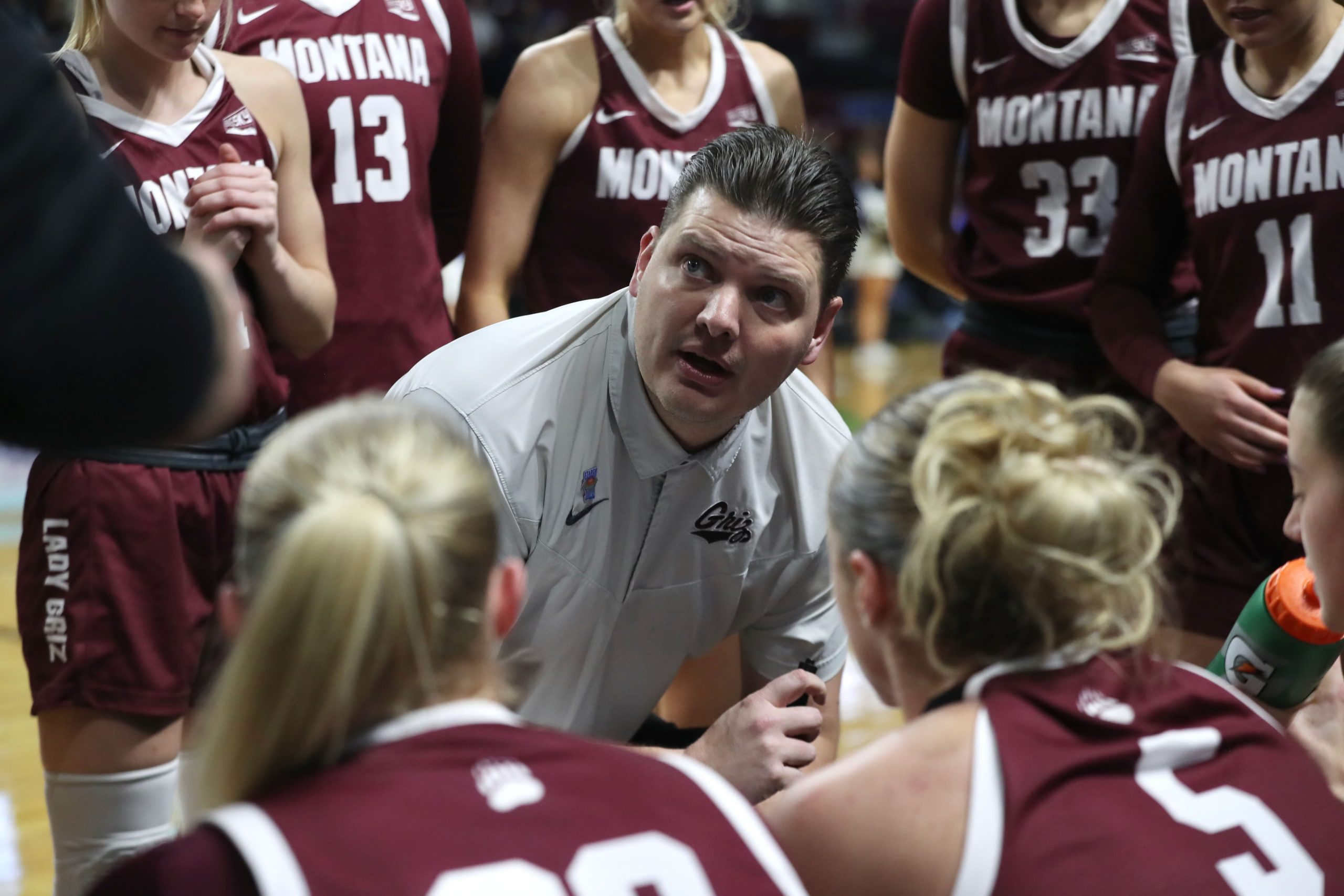
In the huddle, Harris and his staff discussed strategy. Even with less than a second between the 30-second shot clock and the game clock, the Lady Griz wouldn’t foul straight away. Instead, they’d try for a trap and a turnover.
It was a gambit that wasn’t guaranteed to work, particularly against Bobcats point guard Esmeralda Morales. The week before, Morales had been named the Big Sky’s MVP in her first year at Montana State after transferring from Portland State. After three years of mostly winning-free basketball in the Rose City, she’d taken the Bobcats to an entirely new level, bringing highlight-reel passing and shotmaking to accent their fearsome defense.
In the January game in Missoula, it had been her free throw with fewer than five seconds left that had given the Bobcats their one-point lead.
In this game, she was already up to 25 points, hitting a variety of audacious shots including an and-1 banker in the final seconds of the first half that gave MSU a 35-27 lead at the break. There was no question who was getting the ball for the Bobcats.
After inbounding the ball into the backcourt, MSU finally got it to Morales at the top of the key with 27 seconds left. Sensing pressure from a rapidly approaching MJ Bruno, who’d been chasing the ball like a madwoman for the entire length of the play, she spun away towards her left.
27…26…25…
For an instant, it looked as though Morales had gotten away from Tyler McCliment-Call. But as she slowed up to consider her next move, Bruno, who had never stopped sprinting, caught up with her and hooked her right arm under Morales’s left, knocking the ball free and gathering it up in one motion.
With no timeouts, the Lady Griz had to go. Bruno, a senior transfer from Portland who was playing in potentially her final college game, pitched the ball back to Montana point guard Mack Konig, who walked it across halfcourt as the clock continued to tick down. From the sideline, Harris screamed instructions.

19…18…17…
The situation had just become a great deal more dire for Montana State, but there was still no panic on the Bobcats’ sideline. In her 20th season, Binford had built her finest team yet, a defensive juggernaut that led the country in steals and was ranked in the top 60 in the NET rankings entering Wednesday’s game.
This was a team that had won 29 games in 2024-25, including 19 in a row at one point, and although their dominance led to a lot of blowouts, Montana State had plenty of experience in close games as well.
Five days before their January escape in Missoula, they had beaten Eastern Washington 58-56 in Cheney when Eagles point guard Peyton Howard missed a layup at the buzzer.
Earlier in the title game, they’d slowly worked their way back from a 15-3 deficit that would have caused lesser teams to melt down, hitting shots and holding the Lady Griz to just 12 points over the final 14 minutes of the first half. This was not a team that had a habit of losing their heads, no matter the situation.
“We’ve been in some holes during conference play and even preseason play that we’ve battled back from,” Binford said. “We’ve come back from deficits like that throughout the regular season, but when you’re in tournament time … to have them respond and chip away was really remarkable and resilient.”
Plus, even a Lady Griz bucket would only tie the game – it would take a 3 to beat them.
With 13 seconds left, Konig, standing on the green Idaho Central Credit Union logo at center court, made her move, revving up to drive at Montana State’s Katelynn Martin.
In the offseason, Martin, along with fellow seniors Taylor Janssen and Lexi Deden, made the decision to return for a fifth and final season of eligibility. They had been the experienced core to which Binford added Morales and a precocious class of talented freshmen, the scaffolding around which she hoped to construct a champion. Morales won MVP. Junior Marah Dykstra joined her on the all-conference first team. Freshman Taylee Chirrick won Defensive Player of the Year. But Binford and her staff said, over and over again, that there would have been no 29 wins, no No. 1 seed, without the senior holdovers.
Now, Martin gave ground, retreating as Konig crossed over right to left and zoomed into the paint. Morales came up to meet her there. On the right wing, Dani Bartsch curled up from the corner into the space vacated by Konig at the top of the key. Janssen, left on an island on the wing, recognized the danger too late. Her head swiveling to try to keep track of Bartsch, Bruno in the corner and McCliment-Call cutting along the baseline behind her, she reacted a second too slowly.
11…10…9…
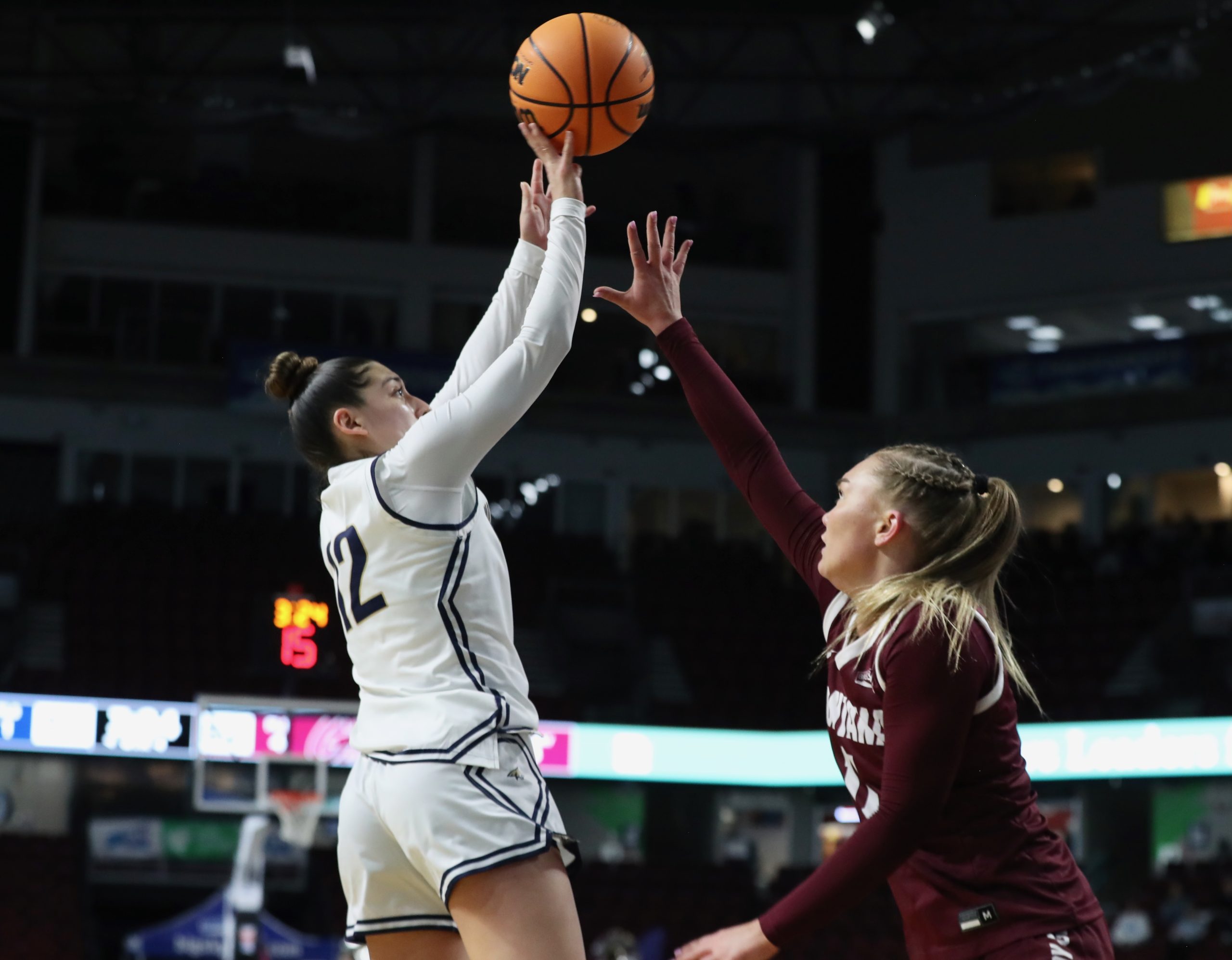
Trapped halfway down the lane, Konig stopped and pivoted, slinging the ball behind her to Bartsch. With no hesitation, she caught and fired as Martin and Janssen leapt desperately out at her.
Harris, crouched on the sideline, watched the ball arc towards the basket along with everybody in the gym.
When it dropped through the hoop, the clock read 7.9 seconds remaining. 57-56 Montana.
“Mack Konig, who had an unbelievable tournament and an unbelievable last two weeks, got to the heart,” Harris said. “I thought we really found something with their coverage in the second half in terms of what we could get to in the half-court. I felt like we really had a beat on what they were doing, but they changed it. And so Mack played off two feet, Dani got to the drag and buried it.”
Still facing the basket, Bartsch pumped both her arms and let out a scream. At one time, the senior from Helena had been a burgeoning star at Montana. Long and extremely athletic, she could completely take over games at times, as when she had 14 points, eight rebounds, five assists and three blocks against Montana State in a 2024 win in Missoula. But those performances were few and far between, as she struggled to develop under Holsinger and could never consistently touch her cathedral-high ceiling.
This season, over 70% of her shot attempts were 3-pointers, and she shot just 34.5% overall – understandably frustrating statistics for a fan base seeing a 6-foot-2 athlete with play-making instincts relegated to shooting spot-ups from the corner. While that view had a kernel of truth, it obscured the years of work that Bartsch had put into making herself a 3-point shooter.
As a freshman, Bartsch shot just 16 3-pointers, making four. Four years later, she’d just hit a shot that made her an instant legend even in the storied Lady Griz history.
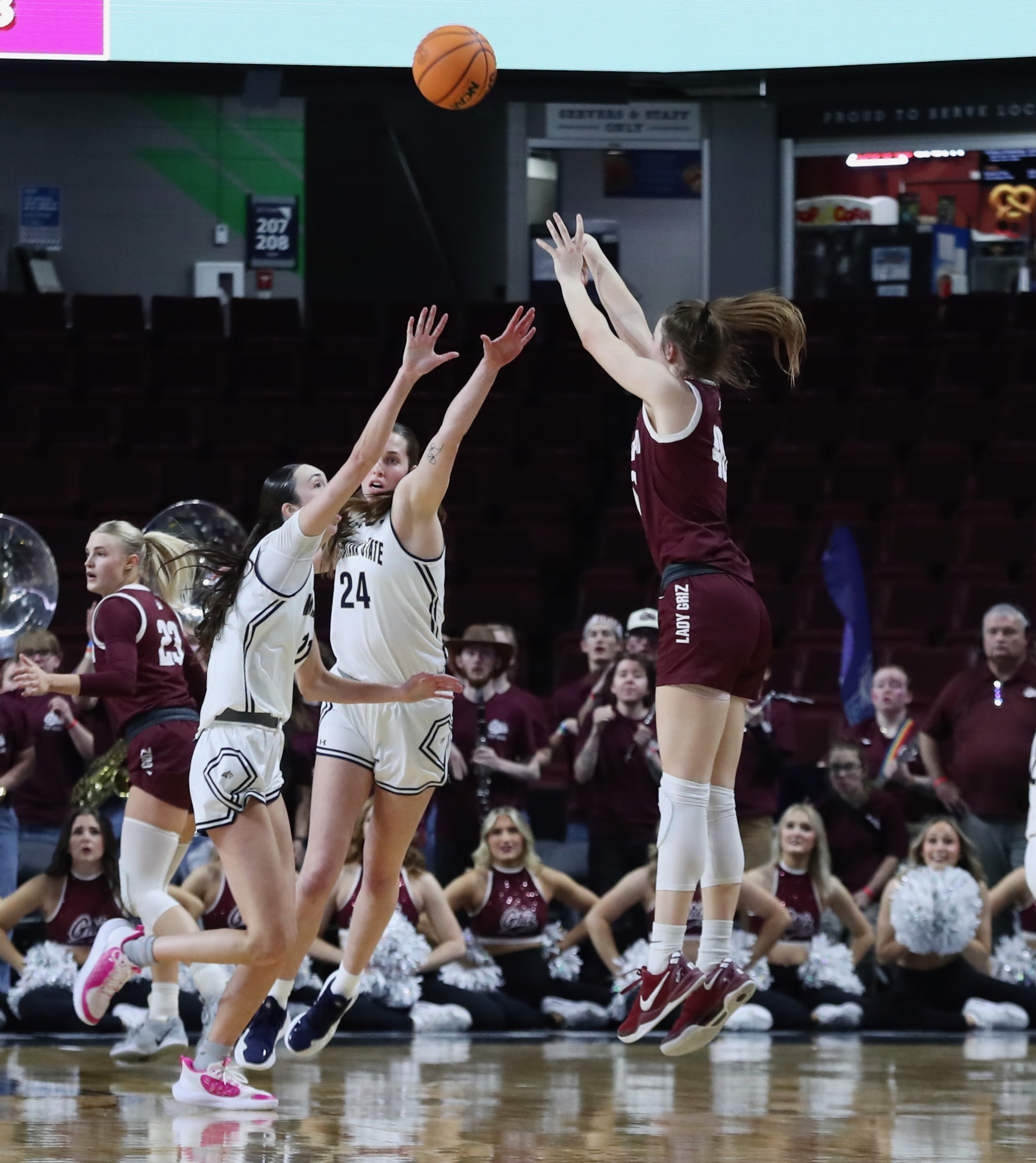
“If anyone questions Dani Bartsch’s commitment to this program and her leaving it in a better place than she found it, I would be happy to have a spirited discussion with them,” Harris said. “Because this is a kid that, that’s all she wanted to do, and she did, and this week proved it. Lady Griz basketball is better than it was when she got here because of her commitment to it.”
As she returned to the bench, Bartsch slapped hands with Konig. Her point guard’s redemption story wasn’t quite as dramatic, but it was no less important for the Griz.
Two seasons after winning the Big Sky Freshman of the Year as a hyped recruit out of Canada, Konig’s development had stalled while Montana State’s Dykstra and Northern Arizona’s Sophie Glancey and Taylor Feldman, all out of the same class, became first-team all-conference players.
Entering the final weekend of the regular season, Konig, although she remained one of the better game-managing point guards in the league, was shooting under 22% from the 3-point line and had reached double-figure scoring in just six of 14 games to that point. As one of Holsinger’s top recruits, she’d also faced turmoil off the court, sitting out a game after his administrative leave was announced.
But, starting against Sacramento State on February 27th, she’d regained her shooting stroke, scoring in double figures in five straight games leading into the championship. With 20 points against Idaho in the first round and 29 against Feldman and Northern Arizona in the semifinals, she’d already clinched her spot on the all-tournament team.

In the title game, she’d faced down Montana State’s terrifying defense like an action hero fighting an unending horde of henchmen, playing the entire 40 minutes and scoring 13 points. The pass to Bartsch was her eighth assist.
Even a week before, nobody had expected Konig and Bartsch to be the ones to lead the Lady Griz back to the program’s rightful place at the top of the mountain, to stamp their names alongside Hall of Famers. Now, they were under eight seconds away from doing just that.
On the Montana State sideline, it was Binford’s turn to scheme. For 20 years, the diminutive former WNBA point guard had been chasing the specter of Selvig’s Lady Griz teams, even after the legendary coach retired. It was a thankless chase – there was no breaking Selvig’s records, or approximating what he had meant to the entire state for just under 40 years.
It had taken Binford three years to make her first Big Sky title game, 10 to win her first regular-season title and 11 to break through and make the NCAA Tournament.
In 2020, her best team to that point went 19-1 in conference play and made it to the Big Sky title game as heavy favorites over Idaho – only for the tournament to be cancelled the morning of that game by the COVID-19 pandemic.
That team had an 18-game winning streak. Now, five years later, she’d built a team good enough to break that record, and they were facing a similarly heartbreaking end.
She knew that Montana would key on Morales. She also knew that she wanted Morales taking the shot if at all possible.
As they broke the huddle, Martin took the ball out directly next to the Bobcat bench. Morales curled around a screen to the near corner, and Martin inbounded the ball to Dykstra, who’d taken a step towards her.
7…6…5…
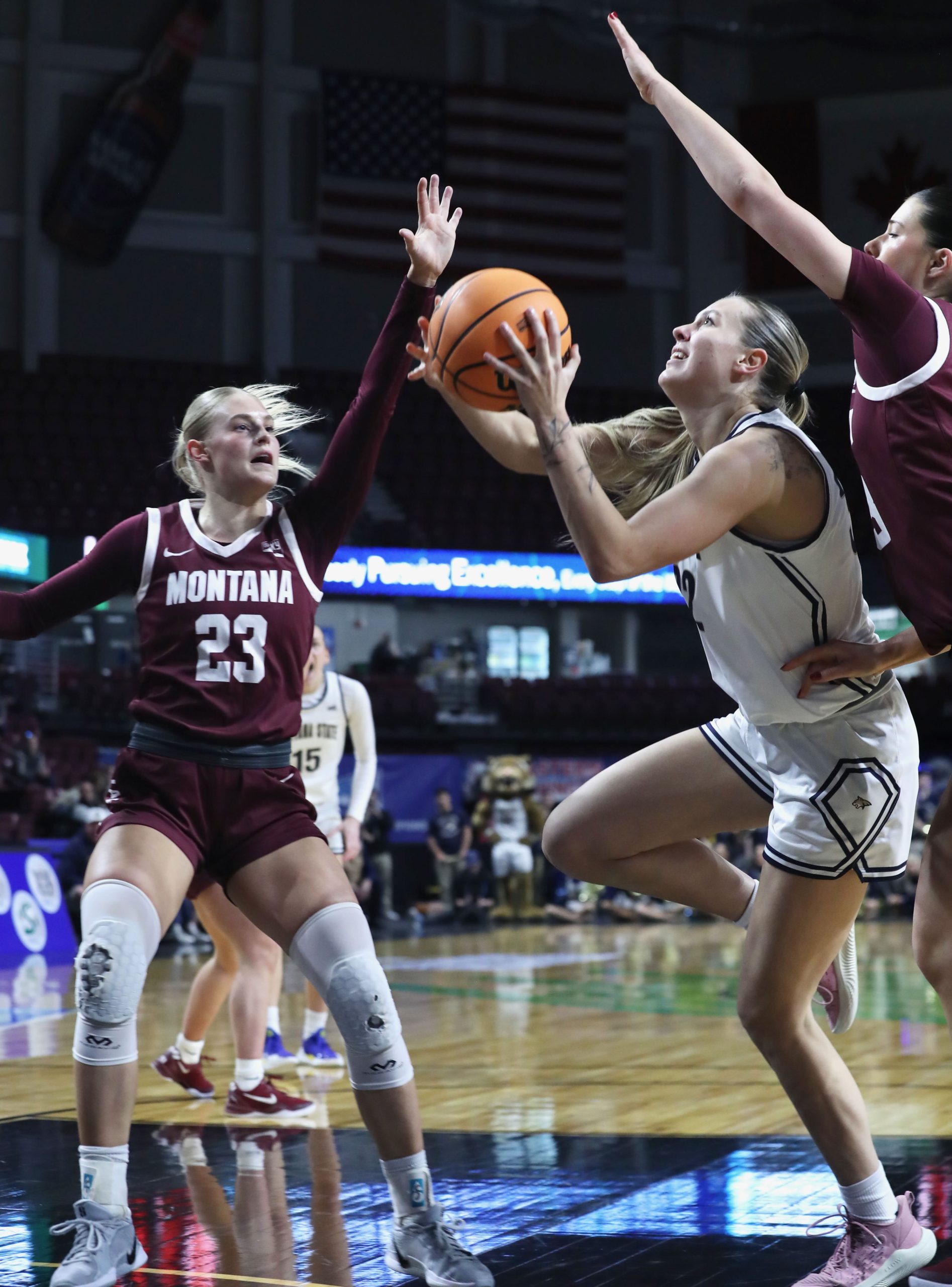
The hard-nosed, fundamental junior from Vancouver had grown into one of Binford’s best players over the years, raising her shooting percentage to 47.6%, adding an occasional 3-point shot and carrying the Bobcats’ shot-creating duties when Morales needed a break. In mid-February, she’d scored 29 at Idaho State, setting a new career-high.
Still, as Morales ran off Martin’s screen and curled back towards the ball, everyone in the building assumed that Dykstra would be handing it off to her.
5…4…3…
Instead, Morales careened into Waddington, Dykstra’s defender, as Dykstra peeled around the screen and towards the paint.
“We knew that they were really denying Esme well, really hounding her all night,” Binford said. “So really, it was a little bit of a decoy there because it was going to pull and open up a lane for Marah to attack, and she’s so good when she attacks downhill.”
Bartsch, reading the play, instantly bailed off Janssen and took three quick steps across the lane, meeting Dykstra right at the edge of the paint.
Dykstra, her body flailing to avoid the contact, flung up a wild heave with both hands.
3…2…1…
The final play of the game as Marah Dykstra becomes an instant #MSUBobcatsWBB legend with a game-winner against the rival Lady Griz to lift the Bobcats into the NCAA Tournament
— Skyline Sports (@SkylineSportsMT) March 12, 2025
(Don’t mind #NuanezNow commentary ) 🤣 pic.twitter.com/D7XX1WtCAi
The ball smacked hard off the backboard on the far side of the hoop, dropping straight down. Bartsch turned, desperately looking over her shoulder. Dykstra took one more loping step, her momentum inadvertently taking her to the perfect spot for the carom, the time now measured in tenths of seconds. Dykstra grabbed the ball and forced it back off the backboard, where it hung on the rim as Bartsch and Konig, Morales and Martin, Binford and Harris stared at it.
Thirty-seven seconds – or 40 minutes, or 17 years, or maybe even longer than that – had been reduced to this.
The clock hit zero. The ball dropped.
At midcourt, Morales collapsed to the ground as the Montana State bench cannoned onto the court.
Bartsch stood motionless under the basket with her arms straight up in the air, as though she could still somehow contest the shot.
Martin and Natalie Picton enveloped Dykstra in a leaping group hug as Binford and Harris called their teams back to the benches. But the replay review confirmed what Dykstra knew as soon as the ball left her fingers – she had gotten the shot off in time, and the clock had expired with the ball in the air.
After 40 minutes of going back-and-forth with the best team in the league, writing their redemption story over and over again, the Lady Griz, finally, had no response left.
And after 37 seconds of craziness, Montana State was going to the NCAA Tournament.
“I was just thinking about how exciting it was that we were going dancing,” Dykstra said. “I was just hoping and hoping and hoping that the shot was good in time.”
